Post-excavation or what we do in the winter
- Team Swandro

- Nov 16, 2019
- 4 min read
Excavation is the exciting and glamorous part of archaeology, but it can only take place for a comparatively short period each year. The intervening period is when the important (but not very imaginatively named) post-excavation work takes place. This involves a team of dedicated people doing lots of tasks like cataloguing finds, entering them in data bases, processing the environmental samples (of which more later), writing preliminary reports etc, all of which are vital tasks but not necessarily terribly exciting and certainly not glamorous. You do at least get to be the first to see some of the summer's finds in all their glory, such as this white tailed sea eagle skull:

The skull came from the Iron Age levels this year, and coincidentally we do have a pair of sea eagles nesting in Hoy once again, just above the Dwarfie Stane in Rackwick Glen (another probably Neolithic tomb site) and they've raised a chick this year and two last year. Sea eagles were once common in Orkney but were hunted to extinction in the 19th century because they were said to take lambs, poultry and piglets. There's even a mid-18th century tale that a baby, lying wrapped in a thick woollen shawl near its mother who was working in the fields in Orphir, was snatched by an eagle and carried across the Bring Deeps to Hoy. The legend has it that a boat was quickly launched and a rescue party, led by the distraught mother, pursued the eagle and were successful in retrieving the baby unharmed, cushioned from the eagle's talons by the shawl. Aside from the eagle's skull, we also have lots and lots of Iron Age pottery, here being catalogued by Klaudia, one of the Bradford students who, as well as working at the dig during the season, are also are working on Swandro material during their placement year.

In a previous dig diary post we mentioned the large quantities of environmental samples which have been brought back to Swandro HQ in Birsay to be processed over the winter, you may be pleased to know that the huge pile of sample bags ...
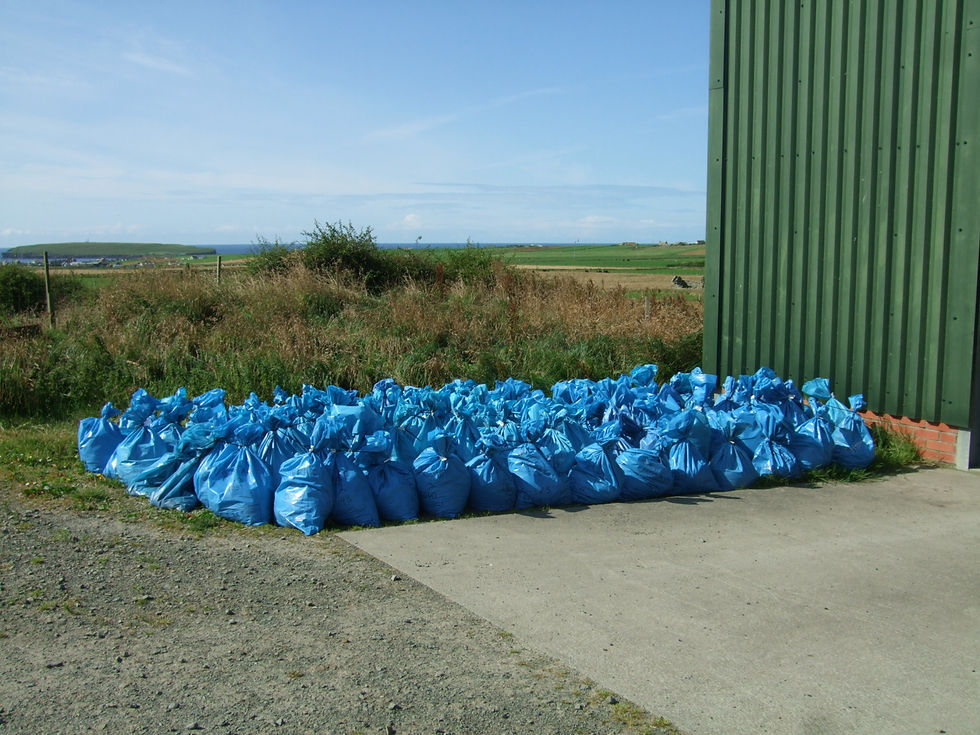
... is now considerably smaller, due to the heroic efforts of Dave in his new high-tech purpose-built environmental sample processing facility:
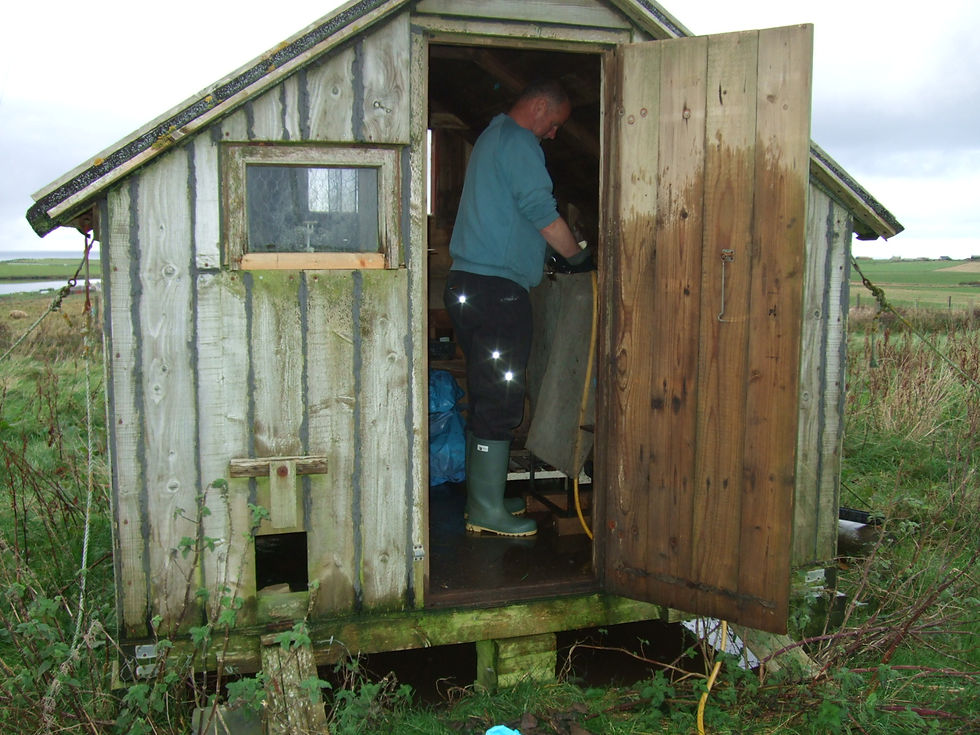
OK I'm lying, it's our old hen hut with some holes cut in the side to let the water out, here at Team Swandro we don't go for anything we have to pay for if there's something kicking around that we can use instead:
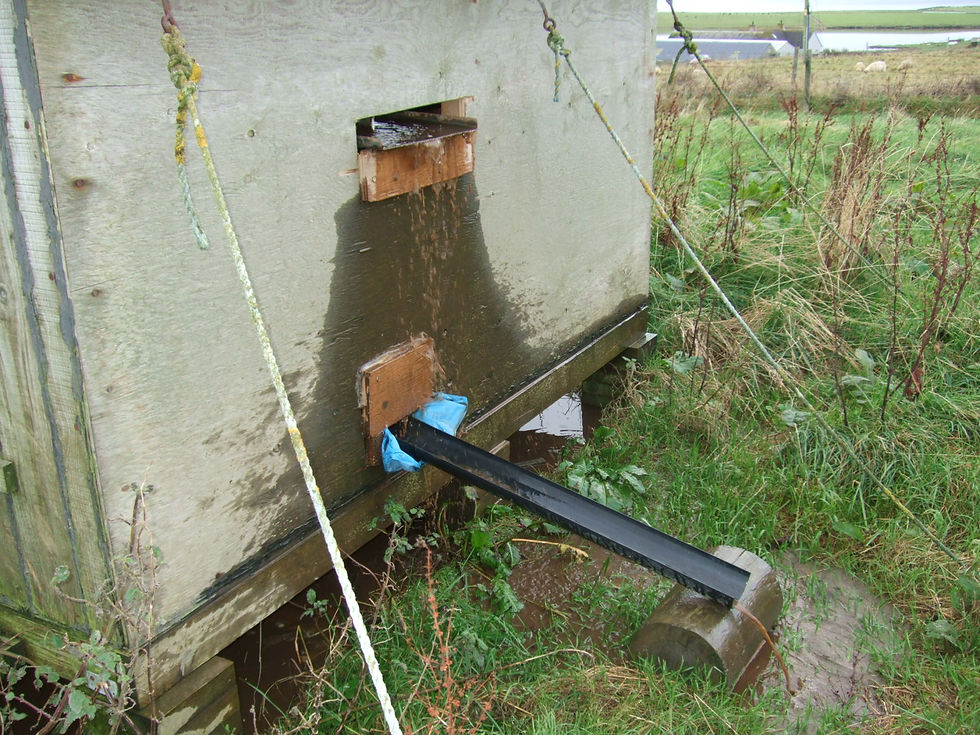
Works pretty well, there's just enough room for Dave to stand upright in the centre of the hut and room for the flot tank, keeps the worst of the weather off him although it's still bitterly cold up to your elbows in freezing cold water. (If you're wondering what on earth I'm talking about, we have a dig diary post which explains environmental sampling & processing - enjoy!).
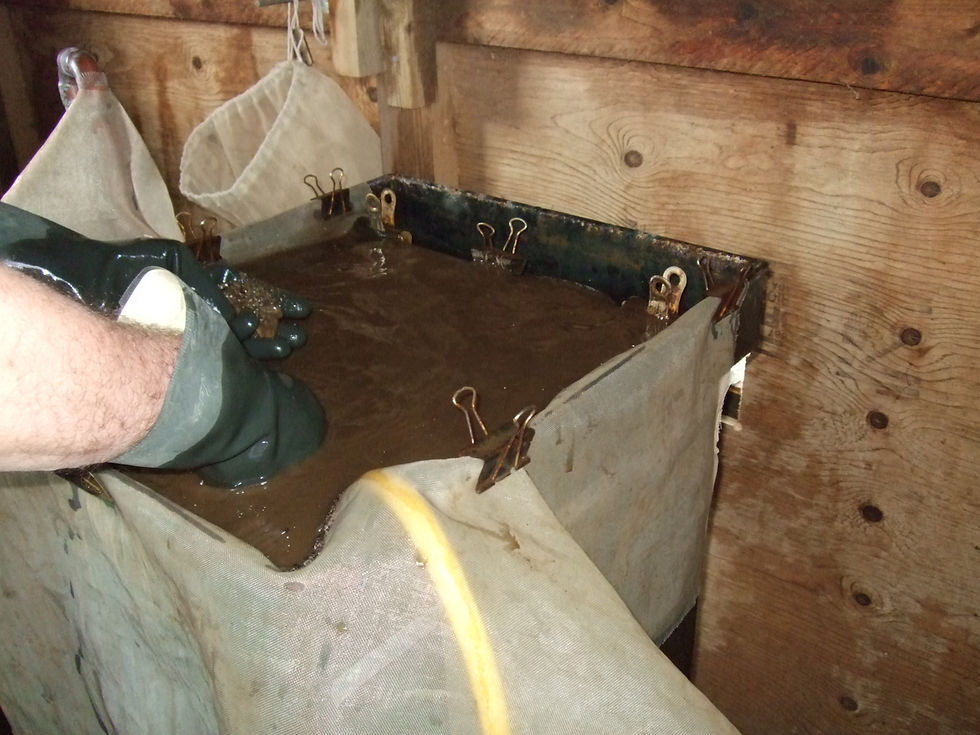
Sorting through the residues (the stuff that's left after all the juicy organic material has floated off) is incredibly tedious, but you do sometimes get little gems to cheer you up, since the emphasis on sampling is to take it in chunks to make sure you don't damage the carbonised seeds and other small particles that will be retrieved by the flotation, so some small finds are inevitably included in the sample. One of the nicest so far is this tiny broken amber bead...

... and these copper alloy fragments and ring from the same context as the amber:

It's just as well that there are some juicy finds to look forward to, as the large pile of sample bags translates into a large stack of trays of grot (more properly known as the heavy fraction or flotation residue, but 'grot' describes it so much better) to sort through once they're dry, this is just a few of them stacked up in Swandro HQ's shed, in spring onion trays which also double as finds trays in summer ...
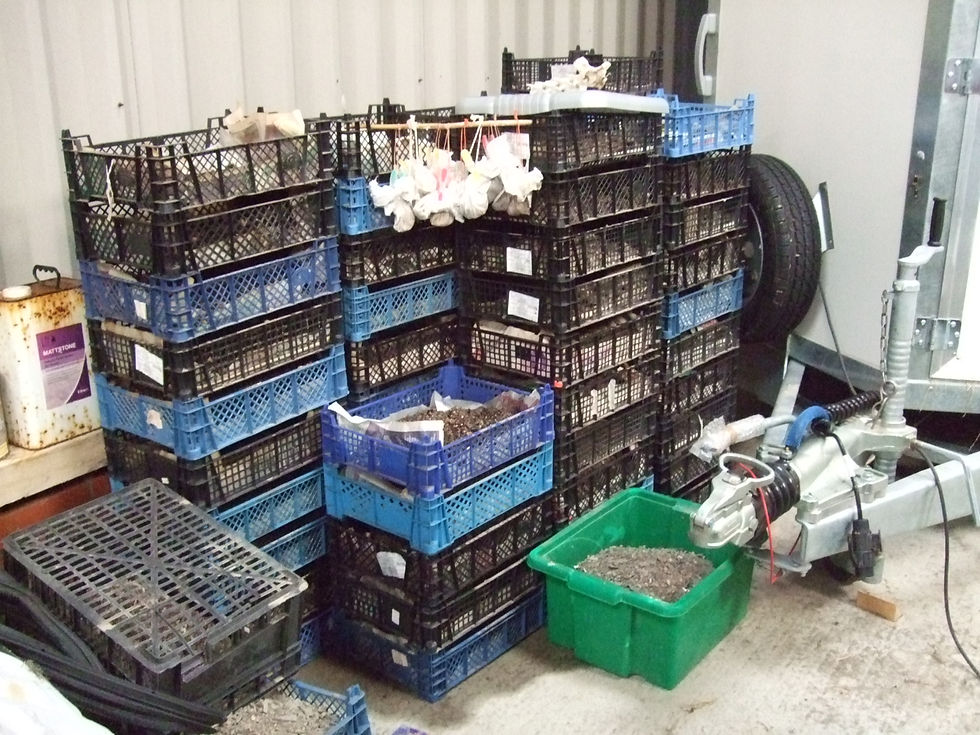
..and here's some more of them in the house, in huge bread trays this time, which do stack up very nicely:

And yes, I do know that you're not meant to help yourself to bread trays as they belong to the bakery and are supposed to go back there, and of course we don't do it nowadays, but in Team Swandro's defence we liberated these whilst digging in London waaaaay back in the late 1980s and these are so past it they wouldn't want them back now anyway. (In our further defence M'Lord they'd actually been pinched by someone else & then fly tipped on our site so were pretty knackered before we liberated them for the second time. You used to get that a lot in London, one day we came in and there was a stripped out stolen BMW parked in one of the trenches - not a problem we have in Rousay thankfully!). Bread trays are just so useful - I well remember one London site where our supervisor used to wait until all the sandwich shops had closed in the late afternoon, then dispatch everyone out on raids to liberate the bread trays all stacked up outside the doors ready for collection. They're probably all still in the museum stores, so I like to think we gave our bread trays the chance of a better life here in Orkney. (If you're wondering about the spring onion trays, these are kindly supplied by the local Lidl and also our friends at the Lynnfield Hotel, so no liberating is required). Also during post-excavation work there's a chance to take better photos of some of the star finds from previous seasons, after they're been carefully dried and gently cleaned and so look their best, as is the case with this Pictish painted pebble from the 2018 dig - is is just me or does that look like a dog's head?

Apart from the post-excavation work we are also thinking about next year's excavation, which we are planning on running from the 23rd June to the 11th August, with hopefully an advance team on site the week before. As always we are still fundraising to pay for both next year's excavation, future seasons and future analysis and radiocarbon dates, so if anyone reading this would like to make a donation anything you can spare would be gratefully received. We would also like to thank everyone who has so generously supported us so far, without you we wouldn't be able to continue our work.

Comments